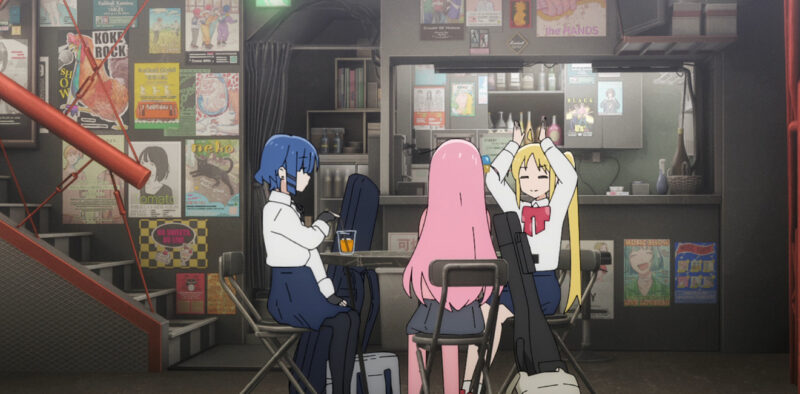
Bocchi the Rock! teems with experimental animation that captures the social anxiety and catastrophizing the anime’s namesake character experiences. It’s a fun ride. Bocchi the Rock! follows the members of Kessoku Band: Hitari Goto (better known by her nickname Bocchi), Nijika Ijichi, Ryo Yamada, and Ikuyo Kita. Each of the girls fall into different psychological profiles. Bocchi is a neurotic introvert who uses lies to cover her insecurities. Nijika is a cheery extrovert and the glue of the band. Ryo offers another introvert, but she doesn’t suffer from social anxiety; she’s a loner but able to social just fine. Ikuyo rounds out as another extrovert, but unlike Nijika Ikuyo suffers from social anxiety. She’s not at the same level as Bocchi, but her anxiety and insecurities trouble her since she needs social interaction.
The character mix creates interesting dynamics as the girls struggle to build their band. Bocchi as the lead guitarist outshines all the others, but her inward-facing and anxiety holds her back until a situation happens and she has the save the band’s performance. The title, Bocchi the Rock! plays on how she, well, rocks as a guitarist, and how, despite all her catastrophizing, she is the rock of the band. All the other members aim to perform to her level, particularly Ikuyo.
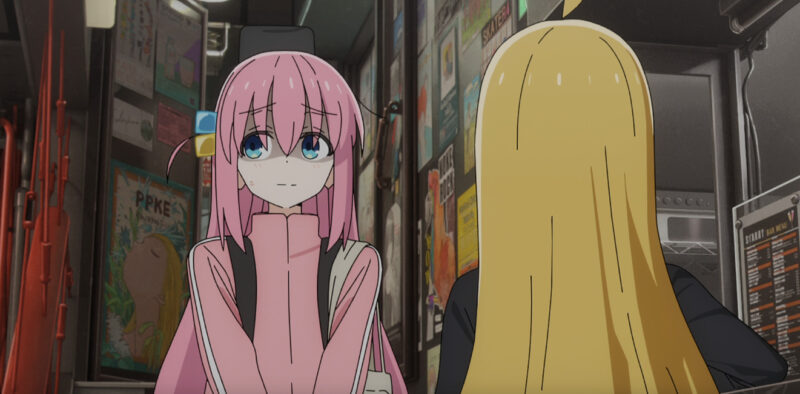
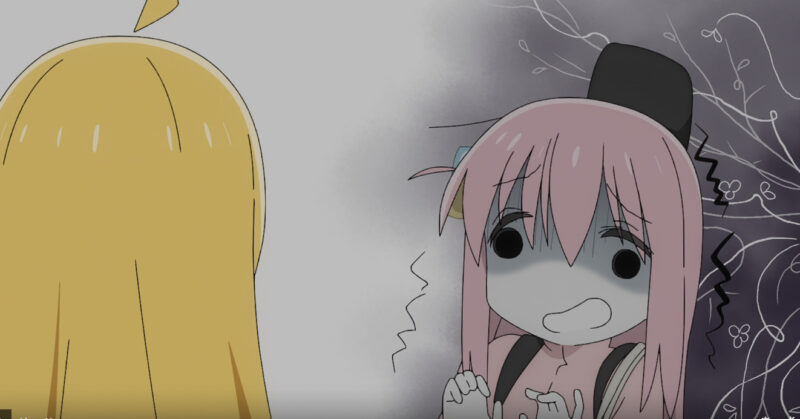
Bocchi’s anxiety and catastrophizing allows the animators to play. Her delusions range from stop motion animation to psychedelics similar to what you’d see from Pink Floyd…ahem, I mean Space Dandy. Sometimes her delusions spill outside her mind and suck in the other band members, playing around with the Fourth Wall within the narrative (sometimes including you the audience too!). The visuals work well to capture the mindset. When I suffered from unchecked social anxiety, catastrophizing and panic attacks would feel as the animators show: wild, overwhelming, strange, and spiraling. Yet Bocchi shows how these episodes are temporary and how you can push beyond them to still achieve big things, like playing music in front of your entire school.
So this brings me to the story’s depiction of introversion. The side character Kikuri Hiroi shares much with Bocchi but turns to alcohol as a means to cope. The story shows how this is mildly destructive: she’s a functional drunk. This contrasts with Bocchi who pushes through her episodes and aims at growing herself. In both of these cases, introversion is shown as a sort of disability with these characters. This is a standard bit of the extrovert bias. However, because the story is told from Bocchi’s point of view, and her desire to grow beyond her anxiety (which is different from introversion), the mix of introversion and anxiety makes sense. Bocchi equates the two.
Thankfully, Ryo shows how introversion doesn’t have to have anxiety or be a disability. She’s a loner because she likes to be alone. She can socialize just fine; she chooses not to. The anime shows how socializing exhausts her. I identify with Ryo the most of all the girls. Social anxiety never goes away when you have it, but it can be largely overcome with a lot of work. Introversion doesn’t equate to anxiety. Rather, it’s a state of energy. Socialness drains energy; solitude recharges energy. Ryo provides a good example of healthy introversion. While Bocchi is interesting as a main character, I would’ve preferred Ryo as the main character. She’s more interesting simply because she’s healthier. Granted, her character growth wouldn’t as pronounced or as comedic as Bocchi’s.
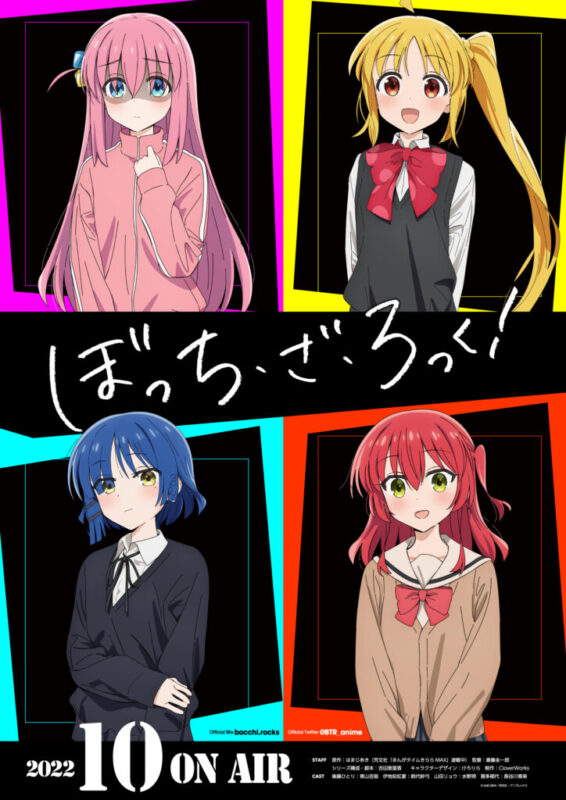
On the other side of the introvert-extrovert spectrum, you have Nijika and Ikuyo. Nijika is to Ryo as Ikuyo is to Bocchi. Nijika is a healthy extrovert who is drained by solitude. She lacks anxiety or inferiority problems. Ikuyo, on the other hand, suffers from inferiority and anxiety which hampers her ability to socialize. While not as extreme as Bocchi, she shows how anxiety decouples from introversion. Of course, all of this happens under the main thrust of the story: cute girls wanting to create a successful band. However, the psychology drives the girls’ social interactions and the comedy.
Ryo, despite understanding how Bocchi thinks, likes to watch her squirm and doesn’t bother to help her with her social anxiety. In her defense, she does that to everyone; she’s a people watcher. I get that–I am one too. Ikuyo looks up to Bocchi and takes Bocchi’s episodes in stride. Nijika helps Bocchi the most. Nijika accept Bocchi where she is and often gives Bocchi a little push to stretch a little further. Nijika is patient with Bocchi. Every introvert needs a good extrovert to help them navigation the social world. Even those like Ryo, who can socialize but choose not to, benefit from someone like Nijika to offset the energy drain and smooth the experience.
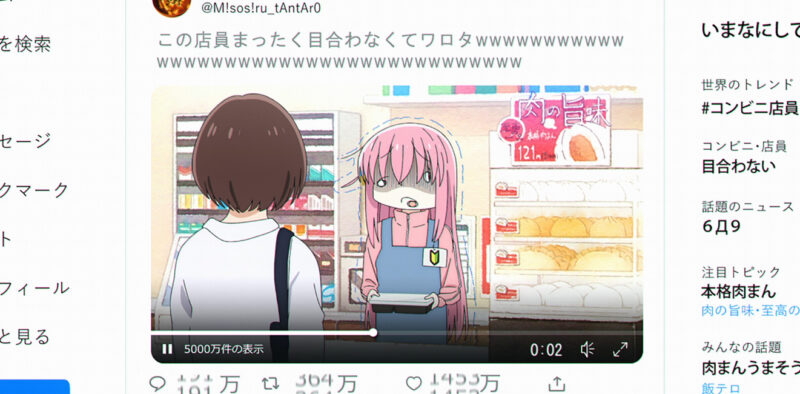
Nijika’s role for the band is smooth the personalities and keep them together. Her elder sister runs a music venue where the girls work to help pay for their performances at the venue. The anime takes a more realistic view of the band. It shows even winning two fans is a hard row. The anime focuses on contrasts: from the personalities of the girls to how the girls move through photo-real landscapes. The contrasts and experimentation make the visuals interesting. Whenever the girls play, their animations match the music they perform from more precise animations to more impressionistic animation of the girls playing their instruments. Bocchi the Rock! offers a wide variety of animation styles, yet it doesn’t feel segmented or choppy despite this variety. It all works together through the use of common character design, design patterns like Bocchi’s anxious deformations, and color schemes. You see the same color palette throughout regular-world scenes and Bocchi’s delusions.
Bocchi the Rock! offers an interesting look at personalities and the difficulties of performing music. If you’re an animation person, you definitely want to check out how CloverWorks plays with stop-motion, deformations, and other fun animation tricks.
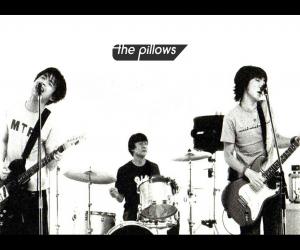
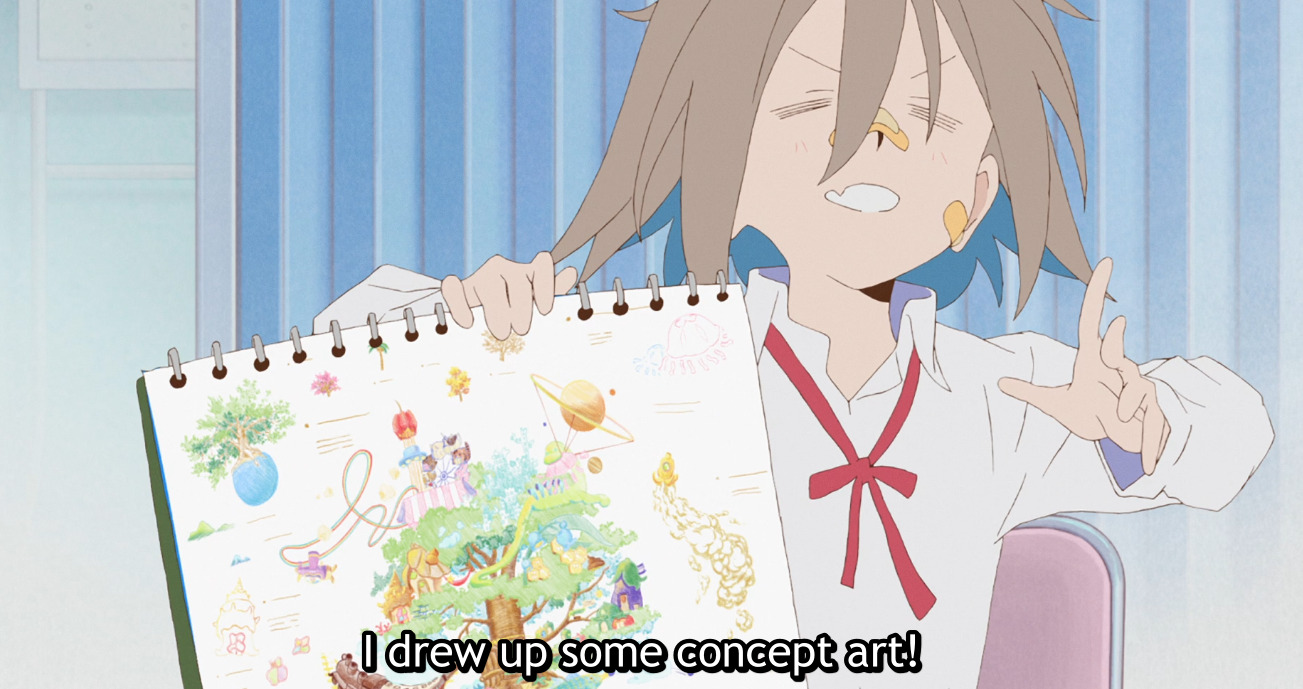

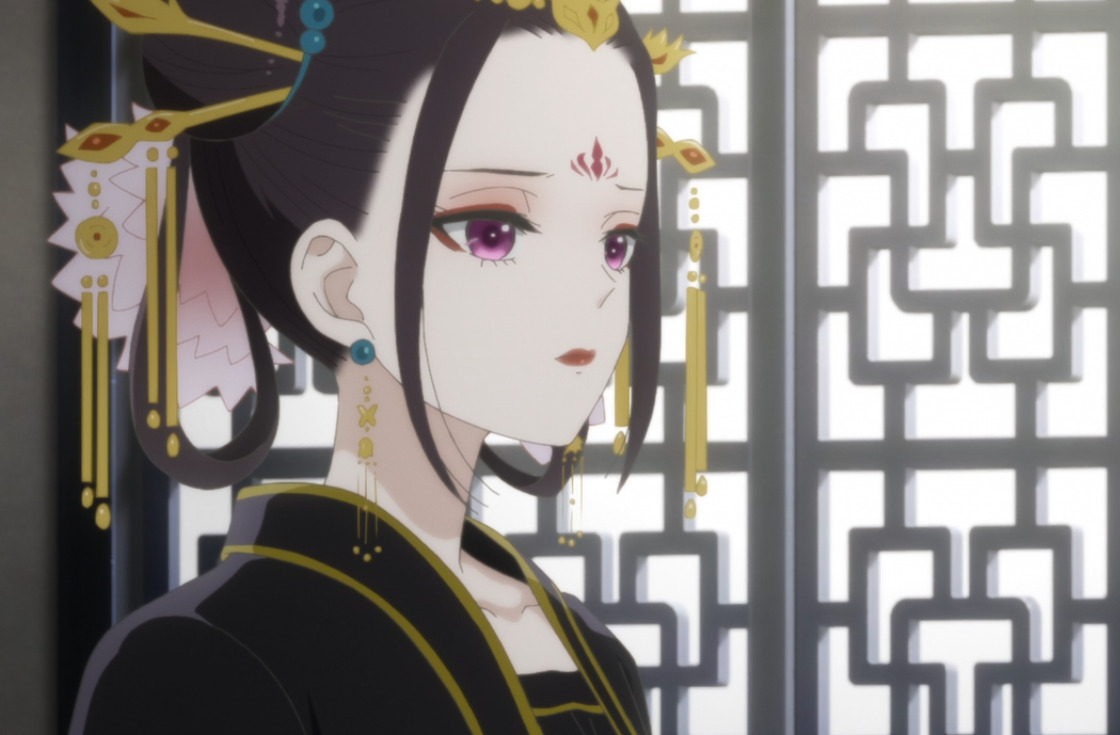
Japan has a fascinating music culture. Americans seem to be most familiar with bigger venue, way-out pop genres like “visual kei” (X-Japan) to current “kawaii metal” (Babymetal and LadyBaby) that poke fun at the whole “idol band” thing. (I’ll admit that I actually like Band-Maid. ) But the less visible school, livehouse and arthouse scenes have also supported everything from Tool’s, “Lateralus” performed by a koto ensemble, to hardcore psychedelic techno.
I’m most familiar with the “Livehouse” scene, which might best describe the actual venues for a “Bocchi the Rock!” type of band. In the 00s, the emerging all-female punk and hardcore groups were known as “triple-x” bands from a term Heaven’s Door used for their all-female band nights. Compared to the US, Japan is something of a music paradise.
I might have to watch this, just out of curiosity.
Band-Maid is on my various playlists. I like their more classic sound. My Japanese friends are big jazz club fans. It’s interesting how Japan keeps many Western flavors of music alive after they’ve waned in popularity in the States. Tool on a koto would be something to hear!
Band-Maid has done a surprising amount of acoustic. I played percussion (so-so) during my college years, so I’m just blown away by Akane Hirose’s drumwork. But they’re all really skilled musicians.
Got to know Mizue Masuda, the original drummer for TsuShiMaMiRe. Wacky-punk (is that a genre?) jazz-style drummer… classically educated (like the rest of the band), she once mentioned that her favorite music was Chopin.
Jazz… I remember the BeeHive in Roppongi. (I think it’s gone now.)
Tool on koto… I’m breaking the link (replace the “[DOT]”), but here you go. This was done by Brett Larner, who I knew mainly as another American ex-pat runner. He had moved to Japan in the late 90s to study koto, and ended up getting the players at his school to try performing this at the Michio Miyagi Memorial Hall. At the time, there was a strong movement to save the koto by broadening its application and audience.
youtube[DOT]com/watch?v=dm2glu3WLGk
I have many of Band-Maid’s acoustic videos on my playlists. There’s so many fun music-genre mashups nowadays.
Thank you for the Tool koto link. It is interesting! As I’ve mentioned, I’m tone-deaf and slowly going deaf. So many music notes flatten into a single sound or disappear altogether. I didn’t know which notes until I dated a pianist, and she tried to teach me. As I watched the koto performance, I noticed the higher end of the instrument blends into about 2 or 3 notes with the “bass” end being more distinct. Rather curious. On piano it’s the opposite. The higher octave notes are easier for me (up to a point) to separate than the lower “bass” notes. I know: poor explanation. I failed music class for obvious reasons :D.
Ah! You might like “boris”, Japanese experimental/psychedelic stoner-doom. I’m being a little tongue-in-cheek, but they’ve been around for 30-years and are among my all-time ever favorite bands. They play down-tuned (usually to A), and their guitarist runs an ear-protection mandatory 500/600-Watts. Much of their live experience is visceral… especially in the proximity of a live house environment.
That’s an impressive mashup of adjectives. Thanks for the suggestion!
I don’t usually watch much anime, but I actually watched several episodes. With the caveat that I know that I missed some of the references (I’m maybe a little over-the-hill), it made me smile. Two observations… I really liked the spontaneous intervals of crazy/goofy animation (and internal stories) to represent moments of descent into overwhelming emotional angst… just brilliant! And the writers are definitely familiar with the Japanese music and live-house scene and local “Shimokita” and Shinjuku cultures and bands. There are a lot of subtle references, right down to Bocchi’s old Les Paul Custom (ironically the same as used by the lead guitarist of the band I mentioned). The music is also actually quite good. I can understand why it’s apparently become a popular anime.
I’m sure I missed the music references during my watch. It was nice to see a studio play with animation. Animation can be more expressive than other mediums if it is used well.